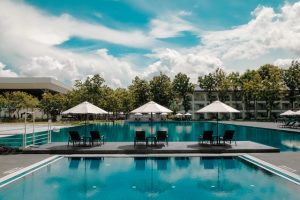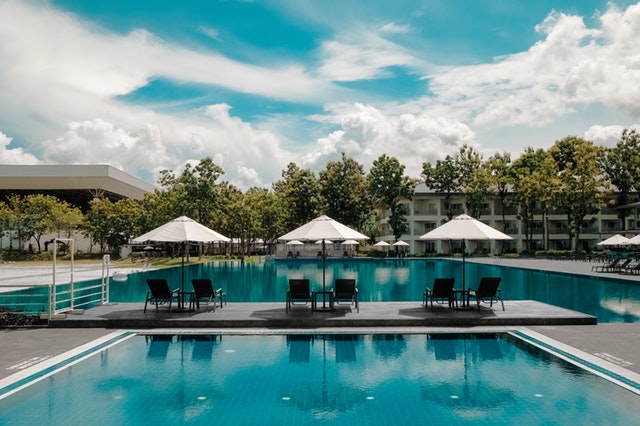Hotel travellers today aren’t easy to please. Their expectations are high. Their appetites, diverse. And they are ever-busy, scrolling through social media, sharing each encounter –particularly harsh and unsatisfactory ones–with anybody who will listen.
They’re learning to anticipate extraordinary adventures to places which inspire them using exotic designs and surprising attributes, but which additionally offers all the conveniences of home. Interior stylists need to balance these extremes to appeal to sophisticated resort guests.
The listed hotel design trends can serve as a roadmap to wow even the most demanding guests.
- A PERSONALIZED EXPERIENCE
In recent years, hotels are traveling destinations in their own right, leading to hotels being designed with numerous approaches in mind to appeal to the requirements of every kind of guest and supply excellent experiences. Guests will continue to request conveniences and services; however, they’ll be more in the moment than before.
Because of this, resorts will need to make the most of any chance to involve guests by offering personalised experiences in each area, merchandise and support.
- HOME SWEET HOTEL
Pioneered by extended-stay resorts, the idea of adding cooking facilities and various amenities to accommodate long term guests has gained traction in the resort industry and is rapidly turning into a standard for hotel rooms. Simultaneously, the times of fitting the same furniture and decor in each guest room are numbered as resorts increasingly opt for creating each room a bit different for a more unique, nostalgic feel.
By designing variants in design and adding unique components throughout the area –including handmade products, sudden textures, mix-and-match indoor and outdoor furniture, varied wall tiles and treatments –resorts can offer guests a more personalised and refreshing experience they will enjoy and attempt to relive.
- LOBBY EVOLUTION
Another way resorts are embracing the home-away-from-home concept is by re-designing their lobbies and other public places from business-like, pragmatic spaces to dwelling room-like spaces which are inviting and warm.
Going forward, more front desks will probably be substituted with sit-down, Comfortable concierge desks and couch check-ins managed by a team armed with tablets while guests sip on a beverage. Additional layout modifications will aim to get their guests out of their rooms and to lively social spaces.
- THE GREENER THE BETTER

While more resorts today are reusing towels and installing automatic lights in a bid to be green, others are carrying energy conservation and endurance to fresh heights.
Next year we’ll see more sustainable, more eco-friendly practices that encourage sustainability and link visitors into the local culture and background, one of them being natural lighting, solar panels, recycled timber, organic substances, hourglass timers in showers, locally handmade items and repurposed furniture.
- INDOOR-OUTDOOR SPACES
Designers will continue to blur the lines between inside and exterior spaces, particularly with waterfront accommodation where these spaces flow together.
- SMART HOTELS
Technology is one of many ways to enhance the satisfaction of guests, so technology is impacting layout in a large way. Online tablet check-ins are eliminating the requirement for big front receptions, providing designers greater flexibility and creativity when designing lobbies.
In smart resorts, automation can control things like room temperature, room service and lighting. Hotel rooms have streaming services like Netflix and Apple TV. Wi-Fi networks operate inside and outside of the resorts.
- STORYTELLING WITH DESIGN
In the coming year, designs are expected to change from the current high-contrast images to more visually calming components, while textures can vary from rich and soft woven cloths to thick, opulent velvet. Expect to see organic substances, cold tones flowing into warmer tones, neutral colours and metallic finishes.
A mash-up of modern fashions will create inconsistent, eccentric surroundings, driven by storytelling that’s incorporated throughout the plan and which helps create the type of real and engaging storytelling hotels that guests want.
- A TOUCH OF URBAN PERSONALITY
Up till quite recently, the word “graffiti” used to elicit pictures of spray-painted building exteriors, city walls and subway cars. But today more companies and resorts are embracing street or urban art and integrating it into their layouts to incorporate character and identity to their hotels and resorts.
More than ever, customers are paying attention to that which distinguishes between one hotel from another. Same isn’t always best. Graffiti artwork made by local artists may make substantial visual statements, change the disposition or character of a resort, connect with guests and link with the local community.
- SITE-INSPIRED DESIGN
Site-integrated resorts are skilfully and superbly assimilated into their immediate environment. These resorts amaze guests with amazing views and one of a kind design features which shape perceptions to permit for memorable and dramatic experiences. It’s no wonder they’re trending.
To incorporate hotels with their surroundings, designers will continue to search for natural components for concept inspiration and layout low-impact constructions to integrate with the regional environment.




